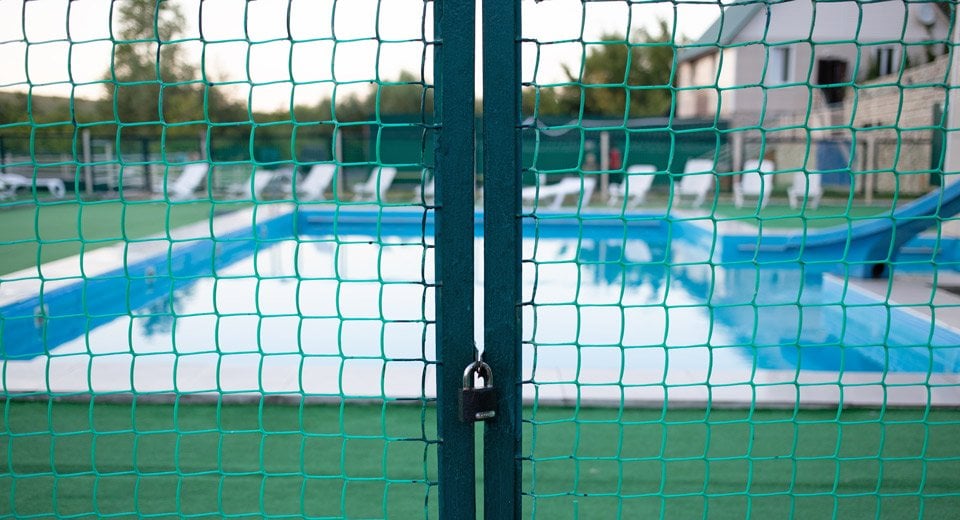Drowning risks for children don’t end with summer

While summer may be in its last days, and days at the beach or pool are numbered, it is still very important to maintain water safety for your toddlers, especially in areas and situations that may not always be obvious.
Drowning is the number one cause of injury or death for children ages 1-4, according to the American Academy of Pediatrics. Unexpected and unsupervised access to water is the biggest drowning threat and 69 percent of drownings in children 4 and younger occur during non-swimming times.
“The typical story I hear when I consult on a child 5 years old or younger who comes to the emergency department or was admitted to the hospital for observation for what we used to call ‘near drowning events’ and are now called ‘non-fatal drowning’ is that their life jacket had been removed because they thought they were done swimming and were somehow momentarily left unsupervised ended up back in the pool or pond,” said Jevon Plunkett-Rondeau, MD, PhD, a Cape Cod Hospital pediatric hospitalist. “It’s a very brief time, under a minute, when there is a lapse in supervision, that this can happen.”
Other water sources that can be just as dangerous to unsupervised, curious toddlers as pools, ponds or oceans include bathtubs, hot tubs, spas, pails of water, wading pools, coolers with melted ice, trash cans, and recycling bins that collect rainwater. Even large bowls of water for pets and toilets can catch the eye of an exploratory toddler.
Layers of Protection
The American Academy of Pediatrics recommends layers of protection to keep your toddler and young children safe. They include the following:
- Fencing can prevent more than half of all swimming pool drownings, including large inflatable above-ground pools and temporary pools. The fence should be at least four feet high and have no opening under it or between slats that are more than four inches wide.
- Separate the pool from the house.
- Install a self-closing and self-latching gate that opens away from the pool. The latch should be at least 54 inches above the ground. Keep the gate locked at all times.
- Cover and lock hot tubs, spas and whirlpools as soon as you are done using them.
- Empty water containers immediately after use, such as buckets, pails, wading pools etc.
- Hold off on installing bird baths, fountains and ponds until your child is older.
- Block access to unsupervised bathrooms. Install latches or locks on toilet seat lids and remove the bathtub drain plug to avoid the tub filling with water if a child turns on the faucet.
Safety and Supervision
In addition to the above protection layers, Dr. Plunkett-Rondeau also recommends further safety steps, including:
- Assign a water watcher: This is especially important at gatherings at the pool, pond, lake or ocean. That person will constantly watch your child and if they need a break, another assigned adult will take over. Taking turns with a water watcher card can be a useful reminder that gets passed on to the next adult after a set time.
- At the beach or pool, make sure your child is wearing a safety device such as a swim vest or life jacket.
- Touch supervision: Whether swimming at the beach or during bath time, make sure an adult is always within one arm’s-length of your child. If the child’s head goes under the water, you will be able to pull them up. Most drownings inside the home happen in bathtubs during a lapse in adult supervision, according to the American Academy of Pediatrics.
- Don’t rely on the lifeguards to monitor your children in the water. An adult should always be in the water with them.
What To Do if Your Child Goes Under Water
“The medical term for drowning is a compromise in a child’s breathing from submersion in water,” said Dr. Plunkett-Rondeau. “Often times it’s not fatal but they can have respiratory issues even if it doesn’t result in death. That is why we want to be very careful about not having any exposure to water in the lungs.”
Dr. Plunkett-Rondeau said it was stressed to her a long time ago that drowning is typically silent.
“If someone is splashing and calling for help, they are not someone who will typically drown. A drowning is silent, a quick submersion, there isn’t any noise or sound when the child or person goes to the bottom of the pool or pond. If you aren’t watching, you won’t know, by sound, what happened.”
If your child’s head does go underwater, Dr. Plunkett-Rondeau recommends the following observations to help decide if your child needs to be evaluated in the emergency department:
- If their head went under the water briefly, they never lost consciousness, they are not coughing and otherwise appear well, they don’t necessarily need to be seen in the emergency department.
- If they are coughing, have difficulty breathing, have a blue hue to their lips or around their face or appear to have lost consciousness, meaning they were not alert/awake the entire time, they should be evaluated in the emergency department. They may need to stay in the hospital overnight or a few days if their lungs were injured by the water. They will be evaluated, and chest X-rays will show if there are signs of water in the lungs or if there is injury to the lungs.
“While all of the layers of protection will help keep your toddlers and young children safe around water sources, supervision is still key to protecting them,” said Dr. Plunkett-Rondeau.
